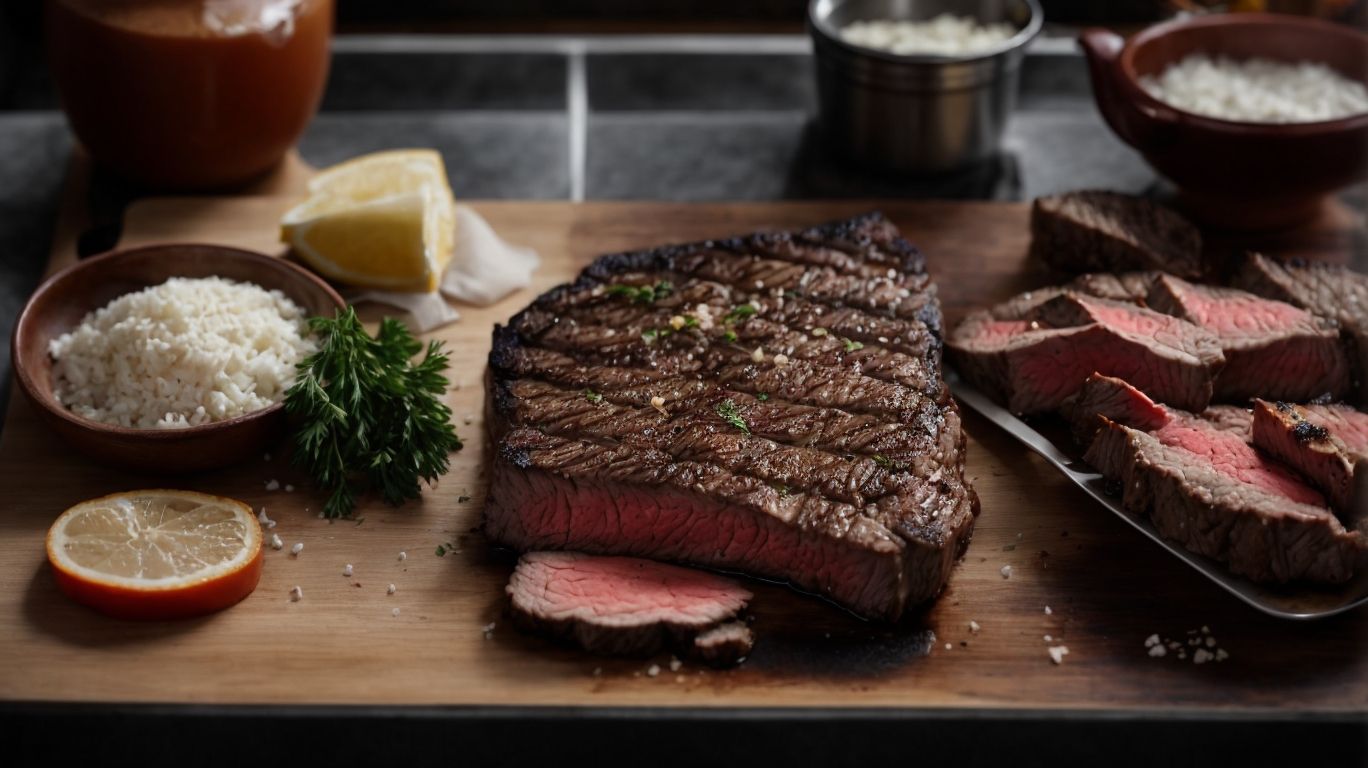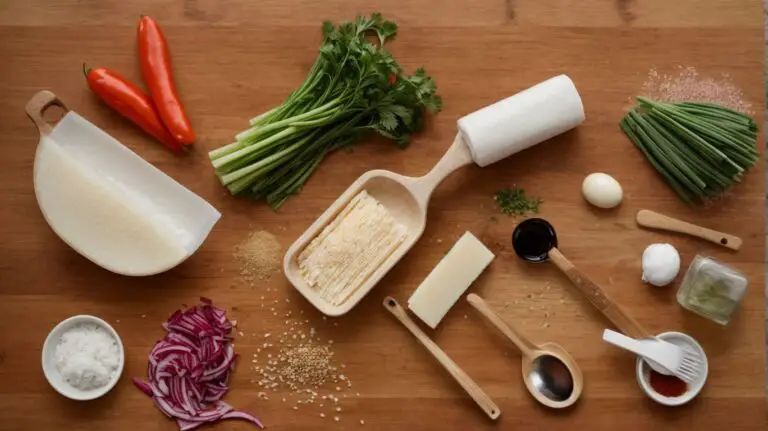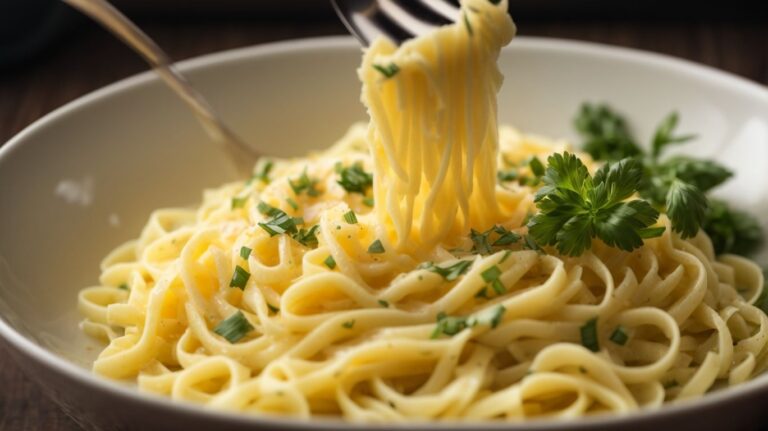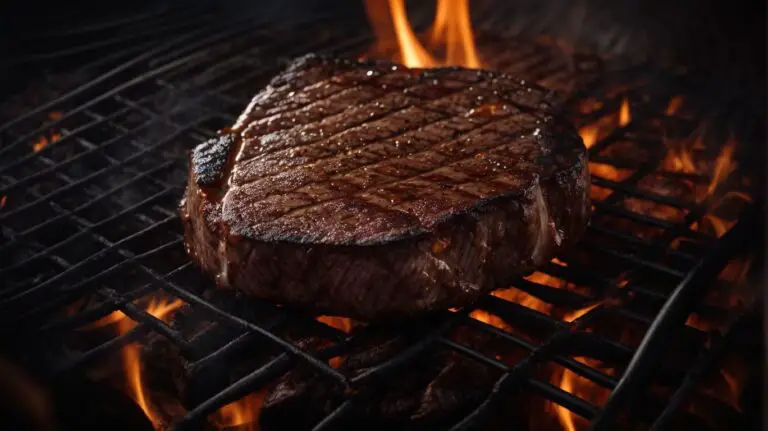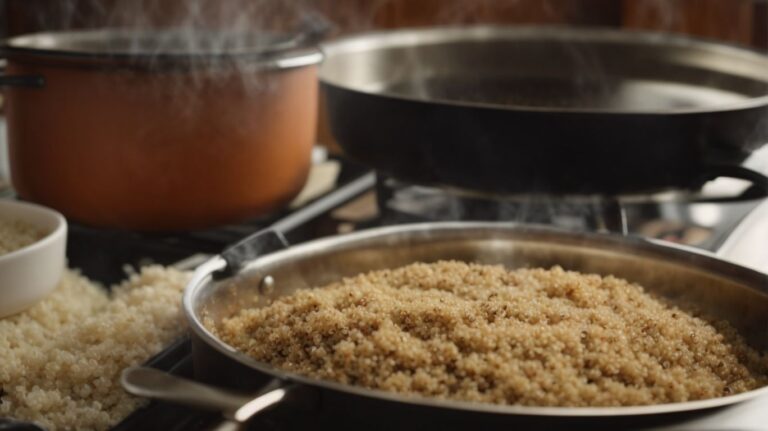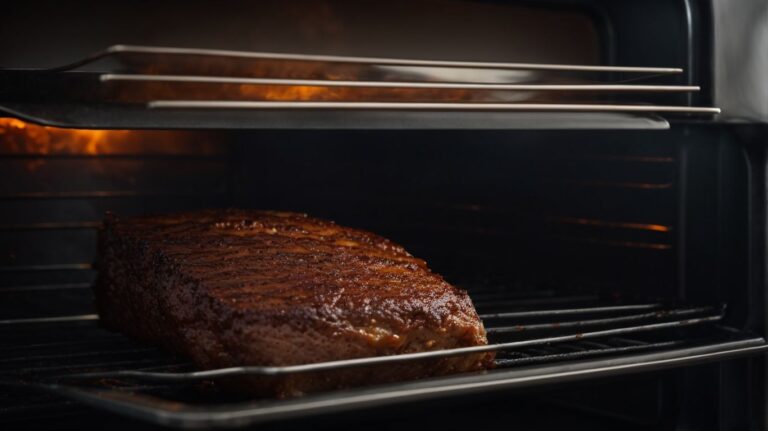How to Cook Steak to Temperature?
Are you a steak lover who wants to cook the perfect steak every time?
We discuss why cooking steak to temperature is important and the different levels of steak doneness.
We also explore the essential tools you need for cooking steak, how to prepare the steak for cooking, and the temperatures you should aim for based on your desired doneness.
Stay tuned for some expert tips on cooking steak to temperature like a pro!
Key Takeaways:
Why is Cooking Steak to Temperature Important?
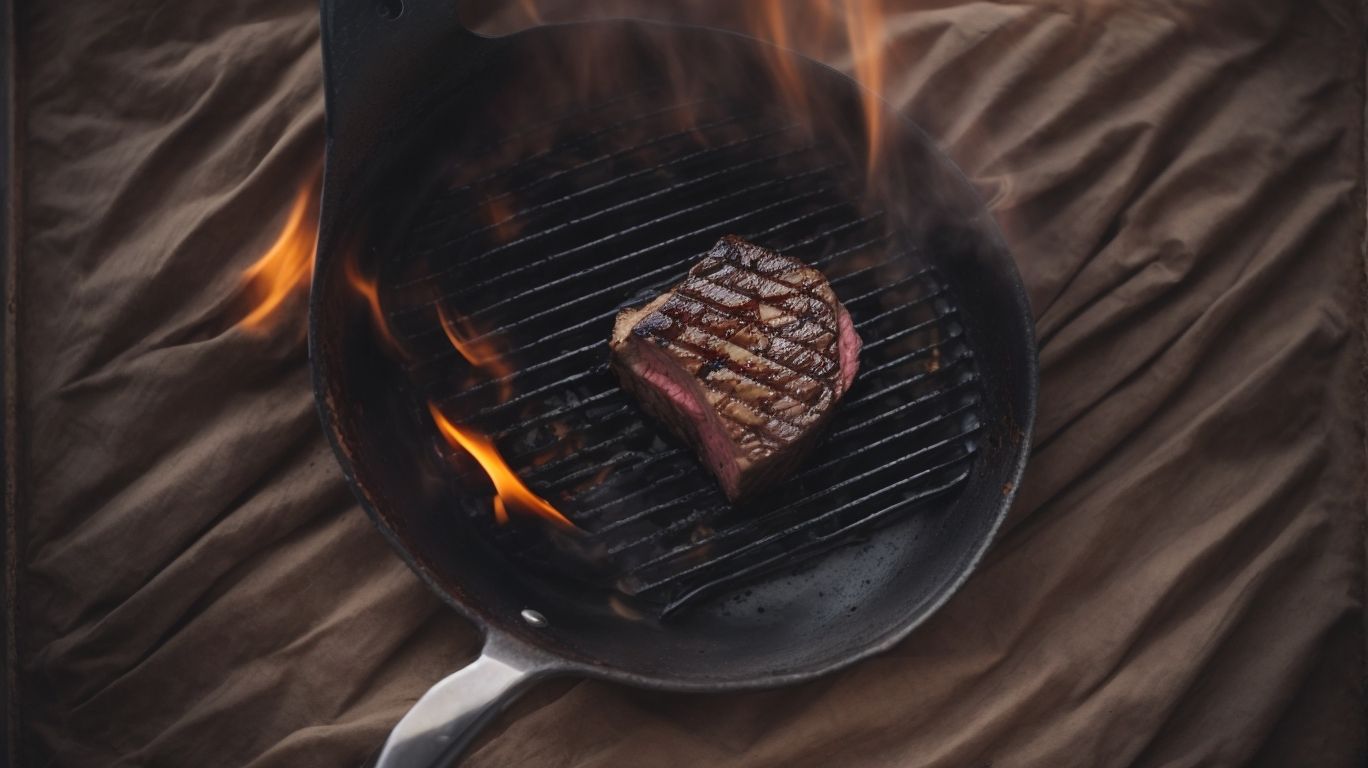
Credits: Poormet.Com – Joe Robinson
Cooking steak to the correct temperature is crucial to ensure food safety, flavor, and texture. The USDA recommends specific cooking temperatures for different types of meat based on safety guidelines and desired doneness.
When steak is not cooked to the right temperature, harmful bacteria like E. coli or Salmonella may not be eliminated, posing serious health risks.
Along with safety concerns, cooking steak to the recommended temperature is essential for enhancing its natural flavors. Undercooked steak may lack depth and richness, while overcooking can result in a tough, dry texture.
Achieving the perfect doneness level is a balance between ensuring safety and optimizing taste and texture.
What are the Different Levels of Steak Doneness?
Steak doneness levels range from rare to well done, each offering a unique texture and flavor profile. Achieving the perfect doneness requires precise cooking methods and monitoring the internal temperature using a reliable thermometer.
When cooking a rare steak, the interior will be cool and red, with the outside caramelized. At medium rare, the inside is warm with a red center, retaining juiciness. Moving on to medium, the center becomes pink and loses some moisture, offering a balance of tenderness and flavor. Medium well leans towards a slight hint of pink in the center with reduced juiciness.
Well done steaks are fully cooked, with little to no pinkness inside, and can sometimes be tough if overcooked. Different methods like grilling can enhance flavors through caramelization, while using a thermometer guarantees a safe and consistent cooking process.
Rare
Achieving a rare steak requires expert precision and a meticulous cooking method to preserve the meat’s juiciness and tenderness. Restaurants like Ruth’s Chris Steak House are known for their mastery in preparing the perfect rare steak.
A rare steak is characterized by being cooked to an internal temperature of 120-130°F (49-54°C), resulting in a vibrant pink or red center. The outer layer is seared to create a flavorful crust, locking in the juices and enhancing the overall taste. It is crucial to monitor the cooking time diligently to achieve this delicate balance between tenderness and doneness.
Medium Rare
Cooking a steak to a medium rare level involves techniques like reverse-searing to achieve a juicy and flavorful outcome. Using tools like a Traeger grill and an accurate thermometer can help in perfecting the medium rare steak.
When utilizing the reverse-searing method, you begin by cooking the steak at a low temperature, gradually increasing the heat to finish it off with a beautiful sear.
By using a Traeger grill, you can impart a rich smoky flavor to the steak while ensuring even cooking due to the consistent heat distribution.
An accurate thermometer is crucial to monitor the steak’s internal temperature, aiming for around 130-135°F for that perfect medium rare doneness.
Medium
A medium steak, as per USDA guidelines, is cooked to a specific internal temperature to achieve a balance between tenderness and flavor development, including the desirable Maillard reaction. Using prime cuts of beef enhances the quality of a medium steak.
Prime beef cuts, such as ribeye or strip loin, offer the perfect marbling and tenderness needed for a juicy and flavorful medium steak. The Maillard reaction, facilitated by the heating process, results in the characteristic brown crust and rich, complex flavors associated with well-cooked steaks. This reaction occurs between amino acids and reducing sugars in the meat, enhancing the overall taste and texture.
When cooking a medium steak, it is essential to monitor the internal temperature carefully. The USDA recommends a temperature range of 135-145°F for medium, ensuring that the meat is cooked through but still retains its pinkish hue and juicy qualities. This level of doneness provides an optimal balance between tenderness and flavor, making each bite a delightful experience.
Medium Well
For steak lovers who prefer a slightly more cooked texture, a medium well steak offers a balance between tenderness and doneness. Using pellet grills like Traeger can impart a unique flavor profile to the medium well steak.
Medium well steak, when cooked to perfection, features a juicy and flavorful interior with a slight hint of pinkness and a well-done exterior. This level of doneness ensures that the steak is cooked thoroughly, yet still maintains its moisture and tenderness, making it a popular choice for those who enjoy a more substantial texture.
When prepared on pellet grills such as Traeger, the steak absorbs the smoky essence that these grills are known for, enhancing its taste with a depth of flavor that complements the meat beautifully.
Well Done
A well-done steak is thoroughly cooked to a higher internal temperature, ensuring complete doneness throughout. Various tools like BBQ grills, specific grill grates, and flavorful pellets such as Pecan pellets can contribute to the ideal well-done steak.
When aiming for a well-done steak, the key is to achieve an internal temperature of around 160-170°F (71-77°C), ensuring no pinkness remains in the center. This thorough cooking process results in a more solid texture compared to rarer steaks. The BBQ grill, equipped with specialized grill grates, provides the perfect cooking surface for achieving those higher temperatures evenly. Using unique pellets like Pecan pellets can add a distinct smoky flavor that complements the well-done steak’s richness.
What Tools Do You Need to Cook Steak to Temperature?
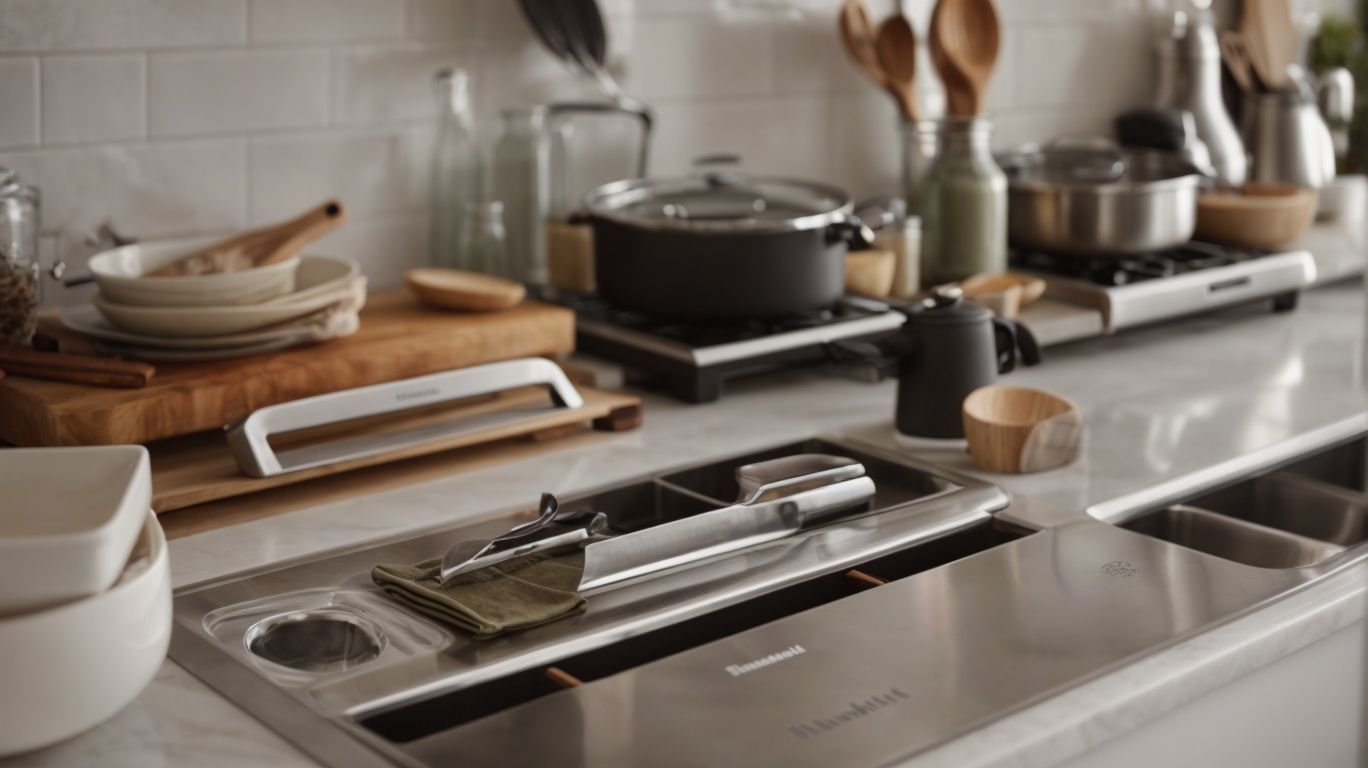
Credits: Poormet.Com – Douglas Taylor
Cooking steak to temperature requires essential tools such as a reliable meat thermometer for accurate readings, tongs for safe handling, and a versatile cast-iron skillet or grill for cooking versatility and flavor enhancement.
Regarding achieving the perfect steak doneness, using a meat thermometer is crucial as it ensures you hit the precise temperature without overcooking. The tongs play a vital role in flipping and moving the steak around without losing its juices or causing any accidents. In addition, a cast-iron skillet or grill provides the ideal cooking surface for that sizzling sear and coveted grill marks, infusing your steak with that distinct smoky flavor.
Meat Thermometer
A meat thermometer is a crucial tool for measuring the internal temperature of steak accurately, allowing for precise cooking based on guidelines. Using tools like the Roast Perfect app can further assist in monitoring and achieving the desired doneness.
When cooking steak, it’s essential to reach the perfect internal temperature to ensure both food safety and optimal taste. A meat thermometer takes the guesswork out of this process by providing real-time temperature readings. With various types available, such as instant-read and leave-in thermometers, you can choose one that suits your cooking style best.
By referring to recommended internal temperatures, you can achieve rare, medium-rare, medium, or well-done steaks accurately. The Roast Perfect app offers valuable guidance on the precise temperatures for different levels of doneness, making your cooking experience seamless and enjoyable.
Tongs
Tongs are essential for handling steaks on the grill or in the kitchen, providing a secure grip and avoiding accidents during the cooking process. Proper tongs usage is vital for maintaining the steak’s integrity and ensuring safe cooking practices.
When using tongs to flip or move the steak, you have better control over the food compared to using forks or spatulas. Tongs are designed to securely grasp the meat without piercing it, helping to retain juices and flavor. This method also prevents potential flare-ups by minimizing contact with open flames. By using tongs instead of utensils that could tear the steak, you ensure that it cooks evenly and stays tender. Investing in a good pair of tongs will not only make your cooking experience safer but also elevate the final taste and texture of your grilled steak.
Cast Iron Skillet or Grill
A cast-iron skillet or grill is a versatile cooking tool for preparing steaks in-house, offering options for traditional searing techniques or modern sous vide methods. The choice of skillet or grill can impact the steak’s flavor and texture significantly.
One of the key benefits of using a cast-iron skillet or grill is its ability to distribute heat evenly, ensuring that the steak cooks consistently throughout. This even heat distribution helps in achieving that perfect crust on the outside while maintaining a juicy and tender interior.
A well-seasoned cast-iron skillet imparts a depth of flavor to the steak, enhancing its overall taste profile. The skillet’s ability to retain heat also plays a crucial role in achieving those coveted grill marks, adding to the visual appeal of the steak.
How to Prepare the Steak for Cooking
Properly preparing the steak before cooking involves seasoning the meat generously to enhance its flavor profile and allowing it to come to room temperature for even cooking. These steps are crucial for ensuring a delicious and well-cooked steak.
By generously seasoning the steak, you allow the flavors to penetrate deep into the meat, creating a savory taste experience. Letting the steak rest at room temperature before cooking ensures that it cooks evenly throughout, preventing overcooked or undercooked portions. This step is especially important for thicker cuts of meat, as it helps the steak cook more consistently. These preparation techniques not only enhance the taste but also contribute to a successful outcome where you achieve a perfectly cooked, juicy steak.
Seasoning the Steak
Seasoning the steak with flavorful blends like Traeger Kitchen’s Prime Rib Rub can elevate the taste profile and add depth to the meat. Using high-quality seasoning mixes enhances the overall dining experience and complements the natural flavors of the steak.
By selecting Traeger Kitchen’s Prime Rib Rub, the seasoning not only infuses the meat with rich flavors but also aids in tenderizing the steak for a juicy outcome. Such premium blends contain a carefully curated mix of herbs, spices, and seasonings chosen to perfectly complement the beef’s taste.
When seasoning your steak, it is crucial to ensure an even distribution of the blend across the meat’s surface for consistent flavor in every bite. The act of seasoning is a culinary art that can transform a simple dish into a gourmet delight.
Bringing the Steak to Room Temperature
Allowing the steak to rest and come to room temperature before cooking promotes even cooking and enhances the meat’s natural juices and flavors. This step is essential for achieving a perfectly cooked and juicy steak.
When steak is brought to room temperature before cooking, it allows for a more consistent distribution of heat throughout the cut, resulting in a steak that is cooked perfectly from edge to edge. This process helps to avoid the common issue of overcooking the exterior while the center remains undercooked. Letting the steak rest can help the muscle fibers relax, making the meat more tender and succulent. This simple yet crucial step also aids in developing a beautiful sear on the exterior while maintaining a desired level of internal doneness.
How to Cook the Steak to Your Desired Temperature
Cooking the steak to your desired temperature involves precise timing and monitoring with a thermometer to ensure consistency and safety. Following USDA guidelines for internal temperatures is crucial for achieving the perfect doneness.
For a rare steak, the USDA recommends an internal temperature of 125°F, requiring about 3-6 minutes per side on a hot grill or pan. Medium-rare calls for 135°F and 4-7 minutes per side, while medium should reach 145°F, cooked for 7-10 minutes on each side. Achieving a medium-well steak at 155°F will take about 10-12 minutes, and for a well-done steak at 160°F or above, aim for 12-15 minutes per side.
Rare: 125°F
Cooking a rare steak to an internal temperature of 125°F results in a tender and pink center, showcasing the quality of premium cuts like those offered at Ruth’s Chris Steak House. Following USDA guidelines for rare steaks ensures both safety and optimal flavor.
When preparing a rare steak, it’s crucial to start with a high-quality piece of meat. Look for well-marbled, prime cuts that will guarantee tenderness and juiciness when cooked to perfection. At Ruth’s Chris Steak House, renowned for its prime beef selection, the emphasis on top-quality steaks resonates in each bite of their perfectly cooked rare offerings. Achieving the desired internal temperature of 125°F can be accomplished by using a reliable meat thermometer to monitor the doneness accurately.
Medium Rare: 135°F
A medium rare steak cooked to an internal temperature of 135°F offers a balance between juiciness and doneness, achievable through methods like reverse-searing. Using a reliable thermometer ensures precision in reaching the desired medium rare texture.
Reverse-searing, a technique where you cook the steak at a low temperature before searing it, allows for a more even cooking process, ensuring that the meat retains its juices while still achieving the perfect doneness. This method is particularly effective for thicker cuts that require longer cooking times.
When using a thermometer, insert it into the thickest part of the steak to get an accurate reading of the internal temperature. Remember to remove the steak from the heat a few degrees before it reaches 135°F, as it will continue to cook from residual heat, reaching the ideal medium rare state.
Medium: 145°F
A medium steak cooked to an internal temperature of 145°F reaches the desired balance of tenderness and flavor development, including the formation of the Maillard reaction. Using quality seasoning blends like Prime Rib Rub enhances the taste profile of a perfectly cooked medium steak.
When preparing a medium steak, it’s crucial to monitor the internal temperature carefully to achieve the ideal doneness. A meat thermometer is an essential tool for this task, ensuring the steak is cooked to perfection without overcooking. By letting the steak rest after cooking, the juices redistribute, locking in moisture for a juicy and succulent bite.
The Maillard reaction, responsible for the steak’s rich flavor and appealing crust, occurs when proteins and sugars in the meat react at elevated temperatures, creating complex, savory compounds. Premium seasoning mixes, such as Prime Rib Rub, not only add depth of flavor but also aid in the caramelization process for a mouthwatering finish.
Medium Well: 150°F
Medium well steaks cooked to an internal temperature of 150°F cater to steak lovers preferring a slightly more cooked texture. Using tools like pellet grills such as Traeger can impart unique flavors to the medium well steak, satisfying diverse preferences.
When preparing medium well steaks, it’s crucial to bring the meat to this specific temperature to ensure it’s safely cooked while retaining some juiciness. The Traeger pellet grill, renowned for its consistent heat distribution, infuses the steak with a delicious smoky essence that elevates the overall dining experience. This method allows for a perfect sear on the outside, sealing in the juices for a tender yet well-cooked steak that melts in your mouth. Partner your medium well steak with complementary sides like a fresh garden salad or roasted vegetables to create a well-rounded meal.
Well Done: 160°F
Well-done steaks, cooked to an internal temperature of 160°F, provide a fully cooked and firm texture throughout. Utilizing tools like BBQ grills, specific grill grates, and flavorful pellets such as Pecan pellets can enhance the overall taste and texture of the well-done steak.
When aiming for a well-done steak, achieving an internal temperature of 160°F ensures that the meat is thoroughly cooked, eliminating any pinkness. Utilize a meat thermometer to precisely monitor the doneness.
BBQ grills are excellent for imparting that classic smoky flavor, while specific grill grates can create beautiful grill marks and help with even cooking. Enhance the flavor profile by using Pecan pellets in your grill, adding a nutty and slightly sweet undertone to the steak. Experimenting with different wood pellets can bring unique flavor nuances to your dish.
Tips for Cooking Steak to Temperature
When cooking steak to temperature, essential tips include allowing the steak to rest post-cooking, tenting it with foil to retain heat, and using a timer for precise monitoring. These simple steps can elevate the overall cooking experience and ensure optimal results.
Letting the steak rest after cooking is crucial as it allows the juices to redistribute throughout the meat, ensuring a juicy and tender outcome. Tenting the steak with foil helps to keep it warm while preventing excessive moisture loss. Utilizing a timer guarantees that you achieve your desired doneness without overcooking or undercooking.
By following these straightforward yet effective methods, you can enhance the flavor, texture, and overall dining pleasure of your steak. Your guests will appreciate the attention to detail in preparing a perfectly cooked steak.
Let the Steak Rest
Allowing the steak to rest after cooking is crucial as it helps in tenderizing the meat, enhancing the flavor, and retaining the natural juices. This resting period ensures a more flavorful and succulent dining experience.
When a steak is cooked, the intense heat causes the juices to move towards the center of the meat. By letting it rest, these juices redistribute, spreading throughout the steak. This results in a juicier and more evenly flavored bite with each slice. The process of resting allows the muscle fibers to relax, making the meat more tender and easier to chew. Patience during this phase is key to fully reap the benefits of the cooking process, ultimately leading to a delightful and satisfying meal.
Tent the Steak with Foil
Tenting the steak with foil post-cooking helps in retaining heat, ensuring even cooking and further enhancing the steak’s tenderness. This method traps the heat around the steak, allowing it to finish cooking gently and evenly.
By tenting the steak with foil, you create a mini oven environment that encourages the redistribution of juices within the meat, leading to a more flavorful outcome. The retained heat also relaxes the muscle fibers, making the steak more tender and succulent. This technique prevents moisture loss, preserving the steak’s juiciness and preventing it from becoming dry. It acts as a shield against rapid temperature drops, ensuring that the steak remains warm and ready to be enjoyed at its best.
Use a Timer
Utilizing a timer while cooking steak ensures accurate timing for achieving the desired doneness levels. Monitoring the cooking time precisely helps in preventing overcooking or undercooking, leading to perfectly cooked steaks every time.
Not only does a timer help in preventing common cooking mistakes, such as serving a rare steak when aiming for medium-rare or presenting a well-done cut instead of medium, but it also plays a crucial role in maintaining consistency in the cooking process.
By adhering to precise timing, you can ensure that each steak is cooked precisely to your desired level of doneness, whether it’s rare, medium, or well-done, allowing you to serve up exceptional dishes time and time again.
Frequently Asked Questions
What is the best way to cook steak to temperature?
The best way to cook steak to temperature is by using a meat thermometer. This will ensure that your steak is cooked to your desired level of doneness.
What temperature should I cook my steak to for medium-rare?
For a medium-rare steak, you should cook it to an internal temperature of 135°F (57°C). This will give you a juicy and tender steak.
Can I rely on touch and visual cues to determine the doneness of my steak?
While touch and visual cues can help in determining the doneness of your steak, it is always recommended to use a meat thermometer to ensure the perfect temperature.
How can I prevent my steak from overcooking?
To prevent your steak from overcooking, remove it from the heat a few degrees before it reaches your desired level of doneness. The residual heat will continue to cook the steak, and it will reach the perfect temperature.
Is it safe to eat rare or medium-rare steak?
According to the USDA, it is safe to eat rare or medium-rare steak as long as it reaches an internal temperature of 145°F (63°C). This temperature will kill any harmful bacteria present in the meat.
Should I let my steak rest after cooking?
Yes, it is essential to let your steak rest for at least 5-10 minutes after cooking to allow the juices to redistribute and make the steak more tender and flavorful.

